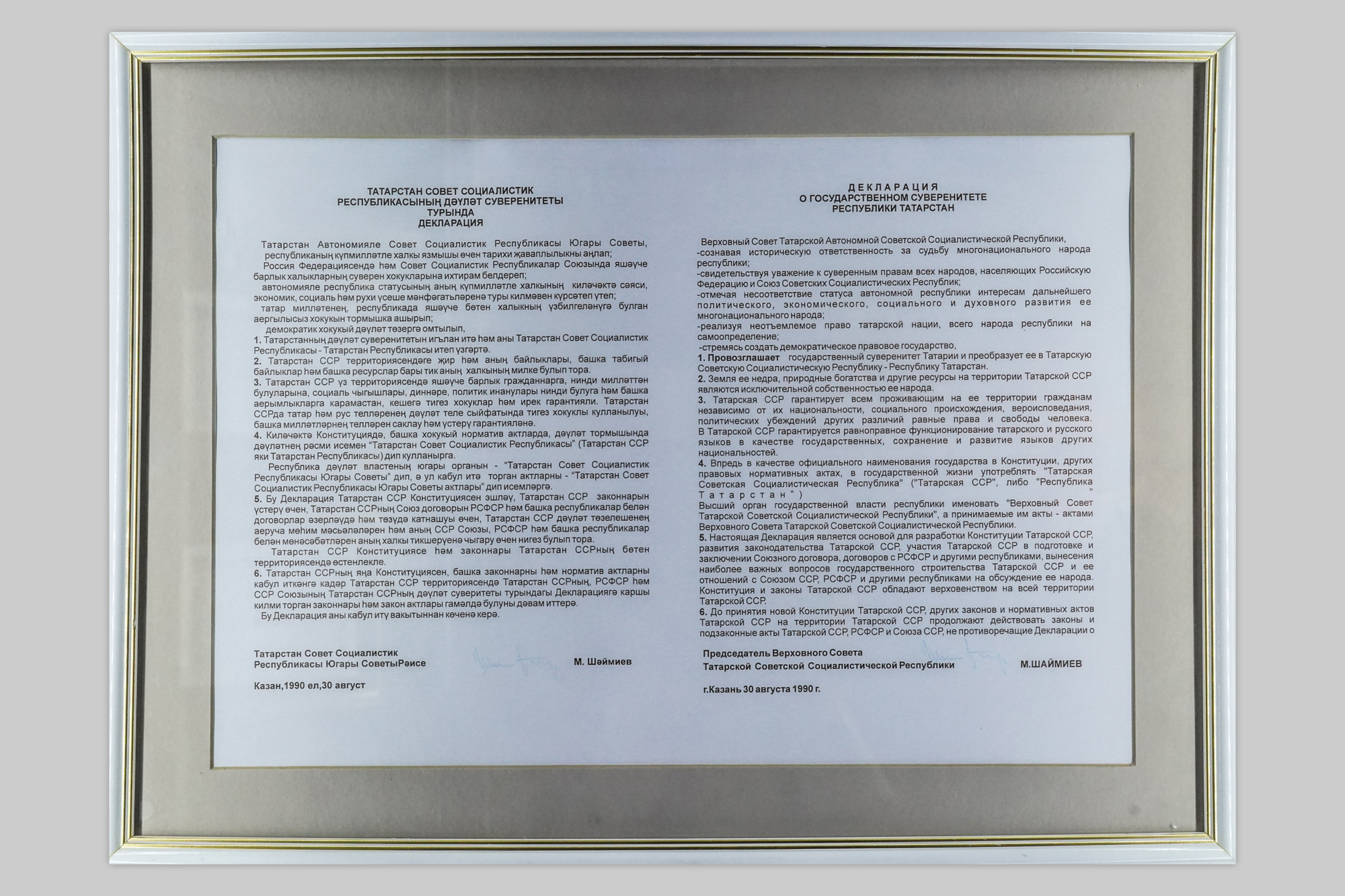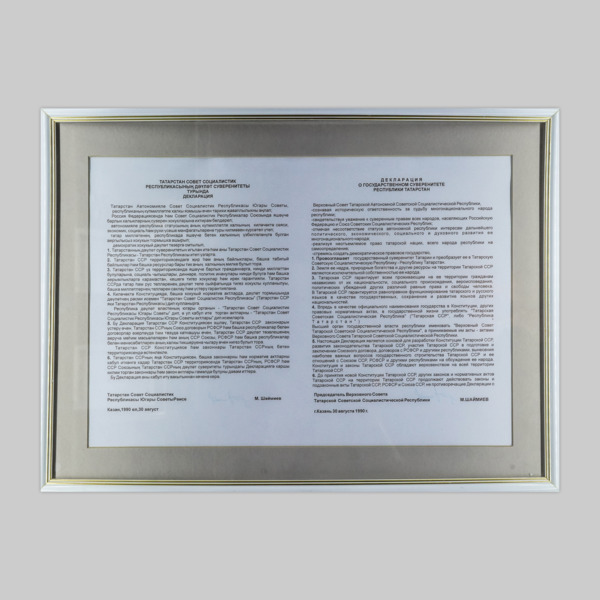On August 30, 1990, the Supreme Soviet adopted a declaration of state sovereignty, and the region received the status of the Tatar SSR (Tatar Soviet Socialist Republic). The document was signed by the chairman of the Soviet Mintimer Shaimiev, who became the president later. On this day residents of Tatarstan celebrate the National Day of the Republic.
Shaimiev noted that ‘the main ideas of the document are the proclamation of the state sovereignty of Tatariya and its transformation in accordance with the will of its multinational nation into the Tatar Soviet Socialist Republic — the Tatar SSR. The sovereignty of the Tatar Republic means the supremacy, independence of its state power in resolving issues of internal and external life beyond the limits of rights voluntarily transferred by it to the Russian Federation and the Union of SSR (Soviet Socialist Republic) on the basis of an agreement <…> The Declaration is the starting point for the development of the Constitution of the Tatar SSR, the development of republican legislation, participation in the preparation of the union and federal agreements with the RSFSR (Russian Soviet Federative Socialist Republic)’.
The Museum of the History of Tatar Statehood and the Republic of Tatarstan keeps a copy of the declaration of state sovereignty of the Republic of Tatarstan dated August 30, 1990. After signing the document, Shaimiev made a speech to the residents of the region. He said: ‘We have just unanimously adopted the Declaration of the Sovereignty of our native republic. Congratulating you, the whole population of the republic on the adoption of the Declaration, I want to say that, having made this important historic step in the life of the multinational people of Tatarstan, we have taken upon ourselves the responsibility that no one has ever experienced in the history of our republic. If this is a fact of maturity, then we must become wise immediately in order to raise the spiritual, material standard of living of the population of the republic through independence which we have declared and, most importantly, to preserve and increase the friendship of peoples that has developed for centuries on our land’.
After the collapse of the USSR, the Republic of Tatarstan (this name it received in 1992) did not secede from the state, but continued to exist as a constituent entity of the Russian Federation. The Declaration became the basis for a new constitution of the region and for agreements with other republics.
Shaimiev noted that ‘the main ideas of the document are the proclamation of the state sovereignty of Tatariya and its transformation in accordance with the will of its multinational nation into the Tatar Soviet Socialist Republic — the Tatar SSR. The sovereignty of the Tatar Republic means the supremacy, independence of its state power in resolving issues of internal and external life beyond the limits of rights voluntarily transferred by it to the Russian Federation and the Union of SSR (Soviet Socialist Republic) on the basis of an agreement <…> The Declaration is the starting point for the development of the Constitution of the Tatar SSR, the development of republican legislation, participation in the preparation of the union and federal agreements with the RSFSR (Russian Soviet Federative Socialist Republic)’.
The Museum of the History of Tatar Statehood and the Republic of Tatarstan keeps a copy of the declaration of state sovereignty of the Republic of Tatarstan dated August 30, 1990. After signing the document, Shaimiev made a speech to the residents of the region. He said: ‘We have just unanimously adopted the Declaration of the Sovereignty of our native republic. Congratulating you, the whole population of the republic on the adoption of the Declaration, I want to say that, having made this important historic step in the life of the multinational people of Tatarstan, we have taken upon ourselves the responsibility that no one has ever experienced in the history of our republic. If this is a fact of maturity, then we must become wise immediately in order to raise the spiritual, material standard of living of the population of the republic through independence which we have declared and, most importantly, to preserve and increase the friendship of peoples that has developed for centuries on our land’.
After the collapse of the USSR, the Republic of Tatarstan (this name it received in 1992) did not secede from the state, but continued to exist as a constituent entity of the Russian Federation. The Declaration became the basis for a new constitution of the region and for agreements with other republics.



